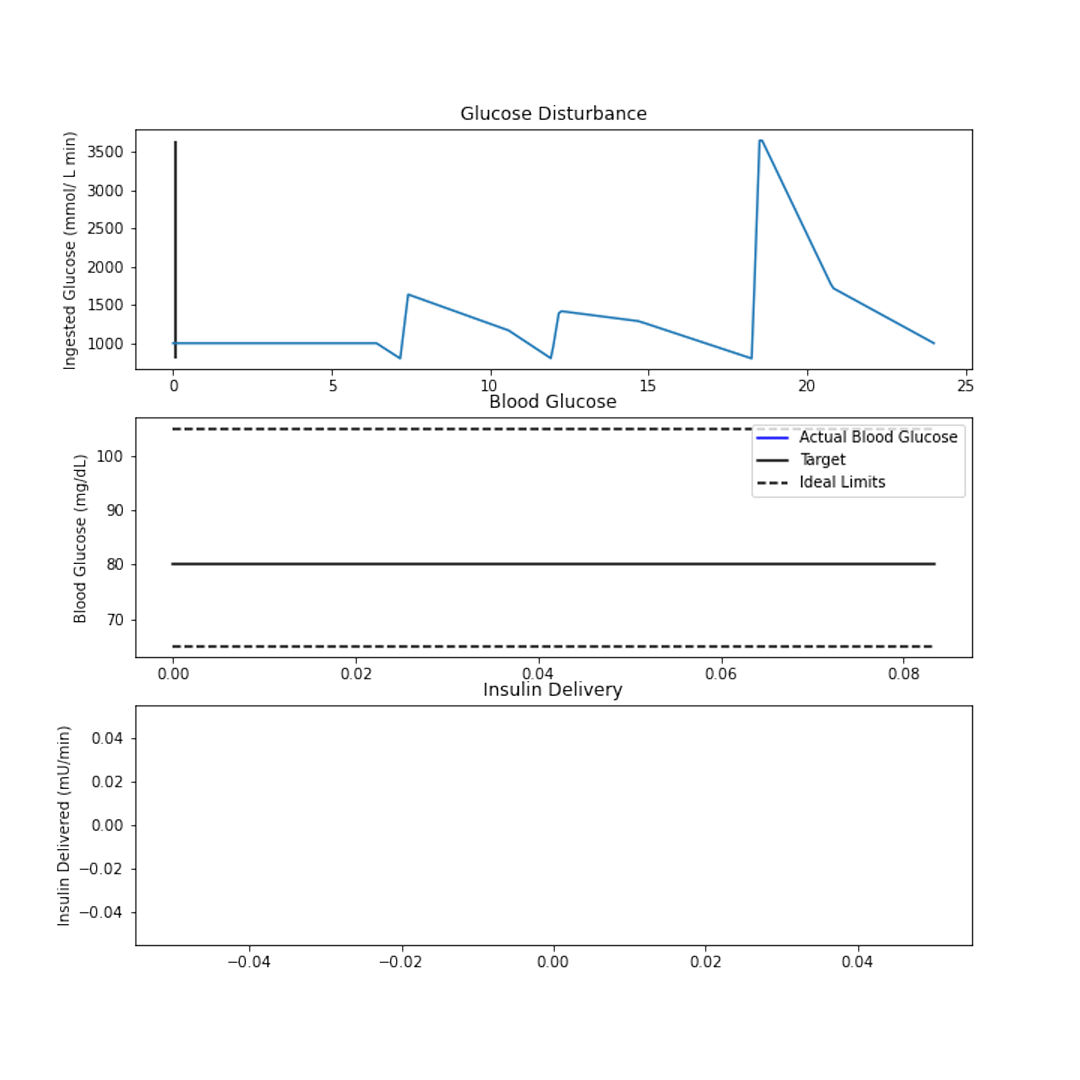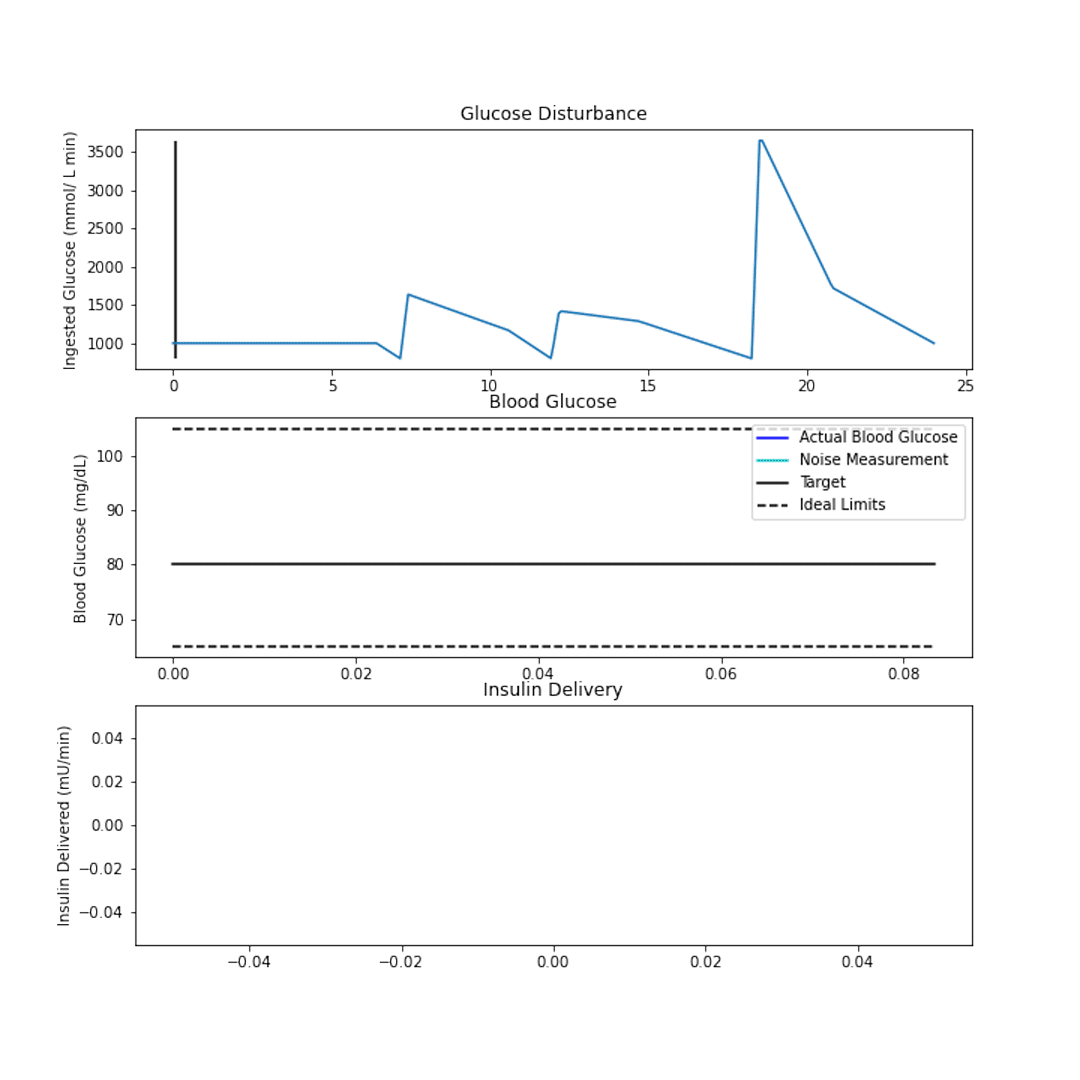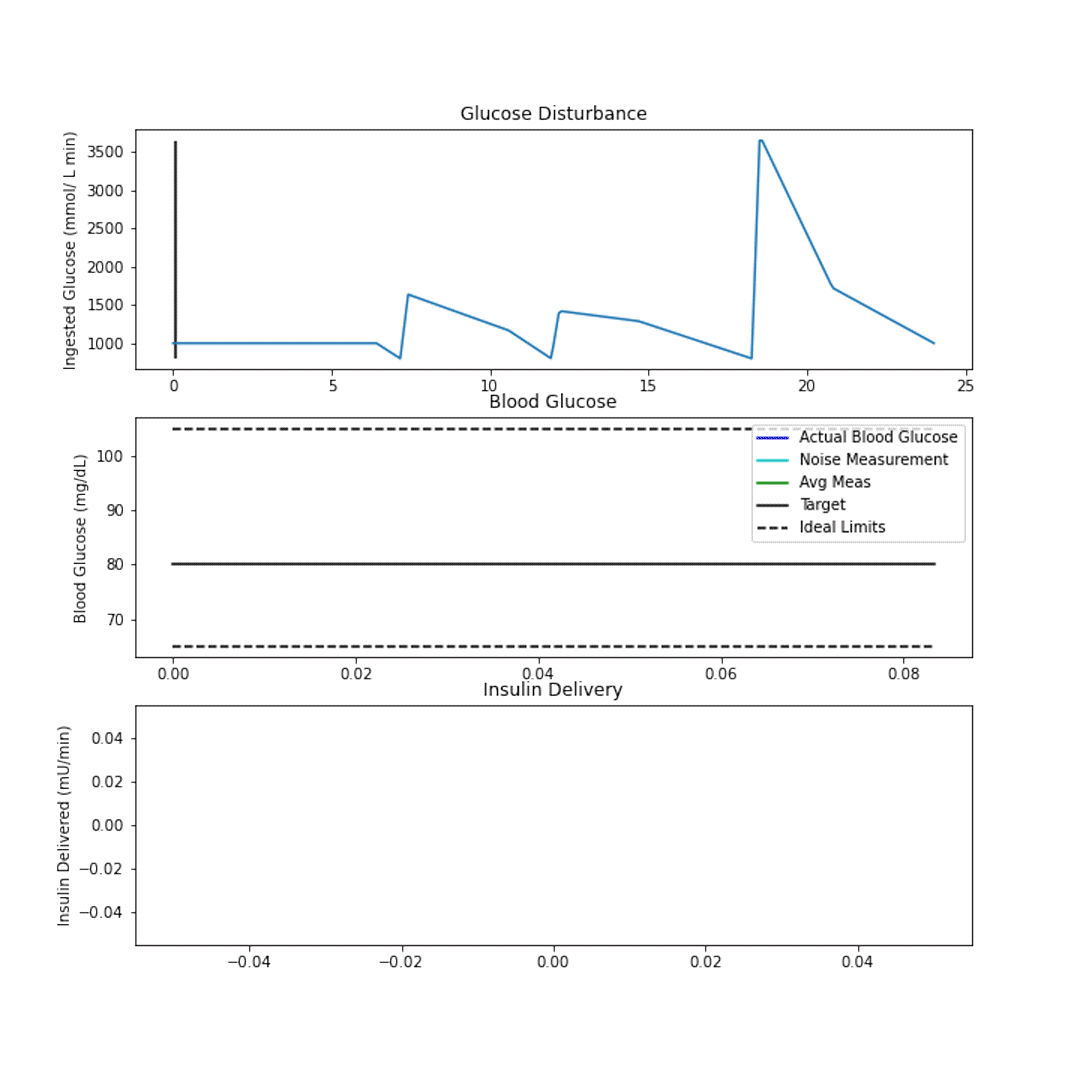A study in blood glucose control for Type 1 Diabetes Mellitus patients
- General framework includes a Glucose sensor which measures every 5 minutes, a control algorithm with no information other than the measurements, and supplied dosage of insulin.
- A broader scope could include information such as food intake, physical activity, infections, and stress level.
- RL does not require labeled training data, but rather looks at cause and effect
- have to set correct cost function for RL to accurately reflect desires
- Performance Metrics included Acceptable ranges, , Control Variability grid Analysis, meal disturbance rejection
- AC Learning and Q-Learning were the most popular RL algorithms
- Challenges for Feedback control
- Sensor lag is about 5-15 minutes
- CGM systems have an absolute error of 13-16%
- Rapidly Responsind Insulin takes about 60-90 Minutes (use two types?)
- Time Variation fo Human body:
- Absorbtion Time varies 20-35% (by site?)
- Insulin sensitivity changes as much as 50% through the day
- Overall Error is 24% to 37% with a lag of 70-110 minutes
- Time Series Numerical model
- Nonlinear Model with No delay
$$\begin{array}{l} \dot{G}(t)=-P_{G}\left[G(t)-G_{0}+\varepsilon(t)\right]-\mathrm{SI}(t)\left[G(t) Q(t)-G_{0} Q_{0}\right]+K_{2} P_{S}(t) \ \dot{I}(t)=-\left(n_{T}+n_{I}\right) I(t)+n_{I} Q(t)+\frac{K_{X} U_{S}(t)}{V_{P}} \ \dot{Q}(t)=-\left(n_{I}+n_{C}\right) Q(t)+n_{I} I(t) \ \dot{P}{S}(t)=\frac{P{X}(t)+P_{C}(t)}{V_{G}}-K_{1} P_{S}(t) \ \dot{U}{S}(t)=K{X}\left[U_{X}(t)-U_{S}(t)\right] \end{array}$$
- over different situations, and disturbances, how does the controller respond?
- give arrays for disturbances of food intake, desired lebels, base metabolic rate, and observe objective function after control.
- Are we varying the Model or the control method?
- how do we simulate the acceptable glucaose range? An interpolated function?
- How are results generalized?
- Focus on safety
- Add units of glucose
- ML Recognition of disturbances
- structuring the oobjective functio for optimal results
- Two types of insulin
- more accurate prediction and parameters
- Stochacity Modeling


